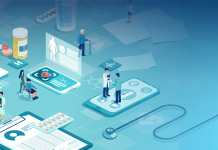Automation offers the NHS a proven, scalable route to higher productivity, better value and more time for patient care, explain Jo Bowers, Associate Director and James Davies, Head of Digital Productivity at Transformation Partners in Health and Care (TPHC)
The NHS stands at a crossroads. As Lord Darzi’s 2024 investigation confirmed, the health service is under unprecedented strain, held back by outdated systems, administrative burden, and growing demand. Meanwhile, the 10-Year Health Plan for England calls for a renewed focus on productivity, with a system-wide target to deliver 2% annual gains over the next three years.
Automation is no longer optional – it is mission-critical. As the plan states: “The shift to digital is among our clearest routes to secure the productivity gains that will ensure the NHS’s financial sustainability.”
Automation: From aspiration to action
Across the NHS, automation is already transforming the way people work. From HR and recruitment to referrals and records management, robotic process automation (RPA) is cutting through repetitive manual tasks that consume tens of thousands of clinical and non-clinical staff hours every year. This frees staff to focus on tasks that only a human can perform.
The 10-Year Health Plan goes further, setting out a vision where “AI scribes and intelligent automation lift the administrative burden on staff, allowing each care team to focus entirely on their patients.”
Automation also aligns directly with the 10-Year Health Plan’s move towards value-based financial flows − rewarding systems that drive innovation and efficiency. Lord Darzi’s 2018 report estimated automation could release up to £12.5 billion annually in frontline NHS time, plus a further £6 billion across social care.
Turning these projections into reality would allow trusts to reinvest savings into frontline services and digital innovation, creating a more sustainable financial model for the future.
Automation in action
Automation can streamline administrative tasks such as appointment scheduling, data entry and billing. It can also enhance patient flow management, reduce waiting times, and improve resource allocation, allowing staff to focus on patient care.
TPHC is already working with NHS organisations to realise these benefits at scale, with recent results from the Royal Free London NHS Foundation Trust showing what’s possible.
In 2024/25 alone, the team automated 45 processes across six of the trust’s departments, processing more than 437,000 items. The investment − £711,792 including technology and resource costs − generated savings of £2.46 million, equating to 75,630 hours or 62 whole- time equivalent (WTE) posts. This delivered a net benefit of £1.75 million.
These results are not isolated. In total, the TPHC Digital Productivity team delivered 21 robotic process automations (RPAs) for nine other NHS clients in 2024/25, saving more than 16,500 hours (2,200 working days) and returning valuable time to clinical, HR, and recruitment teams.
Powering efficiencies in NHS recruitment
One of the clearest examples of automation’s impact can be seen in our work with North London Partners Shared Services (NLPSS), which provides shared corporate services to eight NHS trusts and the North Central London ICB.
Partnering with TPHC, NLPSS has deployed 36 RPAs across six trusts to automate high-volume recruitment processes from pre-employment checks to new starter forms. Automations save the trusts time and money while also improving the recruitment experience for recruiters, applicants and new hires.
This initiative has:
- Reduced time-to-hire from up to 50 days to just 16 days
- Delivered £500,000 in annual savings by reducing reliance on agency staff
- Released 2,500 staff hours per year for hiring managers
- Achieved a 90% candidate satisfaction score for employment checks
- Improved data accuracy from 70% to over 99%, reducing payroll error.
This award-winning collaboration demonstrates that productivity gains can be delivered affordably by the NHS for the NHS.
A system-wide opportunity
The benefits of automation extend well beyond HR. The team recently automated secondary care referrals across 10 North Central London trusts, cutting referral errors and saving 142 working days a year for chronic kidney disease services. This work is returning 20,000 hours annually to outpatient booking teams by moving referrals from the e-referral service into the electronic patient record.
The potential for the future is vast. Automation will also support the strategic shift from hospital to community by freeing clinical time in neighbourhood health teams, reducing administrative load and improving data flow between systems at pace. Embedding intelligent automation into local care pathways can help local teams operate more efficiently and deliver proactive, personalised support.
Automation can streamline primary care tasks such as patient registration, reminders, test result distribution and routine communications. It can also improve finance functions through automated invoicing, billing and business intelligence reporting.
These use cases show how automation enables transformation, helping the NHS meet rising expectations with finite resources.
Partnership for progress
TPHC has become a catalyst for that transformation. Combining expertise in healthcare, process optimisation and emerging technology, the team has worked with more than 40 NHS organisations to design, deliver and scale intelligent automation.
Our portfolio includes over 100 reusable automation solutions spanning clinical, HR, and administrative functions, collectively saving tens of thousands of NHS staff hours every year.
The next decade of digital productivity
The NHS has entered a new era − one that demands productivity, transformation and smarter investment. Automation is the key enabler of all three.
As NHS budgets tighten and the demand for care continues to rise, the role of digital productivity and automation will only grow. Now is the time for NHS leaders to act. With proven results, practical blueprints and skilled resources available within the NHS, automation offers a clear route to unlocking more time for what truly matters − providing exceptional care to patients.
The NHS can no longer afford to wait, and with the right tools, it doesn’t have to. We’ve developed a digital productivity solution specifically for the health and care system and wider public sector. Want to be among the first to discover how it can help?











